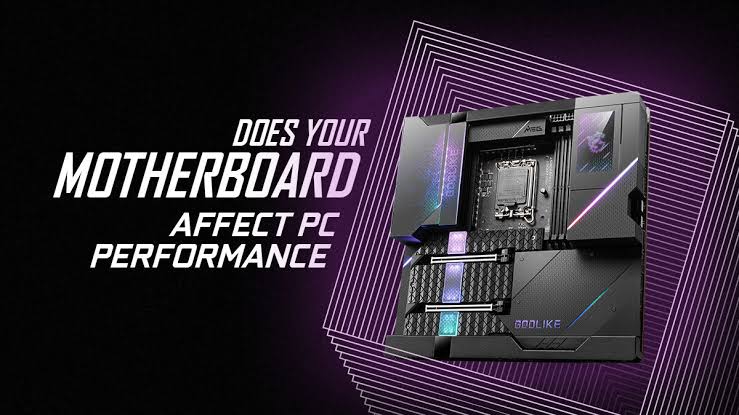When it comes to performance of laptops and PCs components like CPU and GPU often steal spotlight. However, motherboard and chipset play equally crucial roles. They determine overall system performance and capabilities. Understanding how these components influence performance can help users make informed decisions. Users must be careful when purchasing or upgrading their computers. This article explores impact of motherboards and chipsets on laptop and PC performance. It covers key considerations and their implications.
The Role of the Motherboard
Central Hub of System Components
The motherboard serves as central hub that connects and facilitates communication between various hardware components in a computer system. It houses critical components. These include CPU socket RAM slots, expansion slots (PCIe) storage interfaces (SATA M.2) and connectors for peripherals. Examples are USB, HDMI and Ethernet. The layout design and quality of motherboard directly impact system stability, compatibility and overall performance.
Form Factor and Compatibility
Motherboards come in different form factors ATX micro-ATX, mini-ITX that dictate their size. Layout and compatibility with computer cases and components vary. Choosing form factor ensures proper fitment within case and compatibility with other hardware components such as CPU coolers. Graphics cards are also essential considerations. Smaller form factors like mini-ITX offer compact designs suitable for small form-factor PCs but may have fewer expansion slots. This comes compared to larger ATX boards.
Chipset: The Bridge Between Components
Definition and Functionality
The chipset is crucial component on motherboard that acts as bridge between CPU memory, storage devices. It facilitates data transfer and communication between these components. Optimizing system performance and functionality the chipset's capabilities such as number of PCIe lanes, USB ports and SATA interfaces vary depending on chipset model and generation. Features like overclocking or RAID also differ.
Impact on Performance
The chipset plays a significant role in determining the overall performance and feature set of a motherboard. Higher-end chipsets typically offer more advanced features and capabilities, such as support for faster RAM speeds, additional PCIe lanes for graphics cards and storage devices, and enhanced connectivity options. Gamers and enthusiasts often opt for motherboards with high-end chipsets like Intel's Z-series or AMD's X-series chipsets to maximize performance and overclocking potential.
Factors Influencing Motherboard and Chipset Performance
CPU Compatibility and Socket Type
The choice of CPU and its socket compatibility with the motherboard are critical factors that influence system performance and upgradeability. Different CPU socket types (e.g., LGA 1200 for Intel, AM4 for AMD) correspond to specific motherboard models and chipsets. Ensuring compatibility between the CPU and motherboard chipset is essential to avoid compatibility issues and maximize performance.
Memory Support and RAM Configuration
Motherboards and chipsets dictate the types of RAM (DDR4, DDR5) and maximum memory capacities supported. The chipset's memory controller influences RAM speeds and timings, impacting system responsiveness and multitasking capabilities. Optimal RAM configuration, such as dual-channel or quad-channel setups, can enhance memory bandwidth and overall system performance in demanding applications and tasks.
Storage Interfaces and Performance
Modern motherboards support various storage interfaces, including SATA, PCIe NVMe, and M.2 slots for SSDs and HDDs. The chipset's support for these interfaces determines data transfer speeds, storage capacity limits, and RAID configurations for enhanced data redundancy and performance. High-end chipsets typically offer faster PCIe lanes and support for RAID arrays, benefiting users who require fast storage solutions for gaming, content creation, or data-intensive tasks.
Special Considerations for Gaming and Overclocking
Gaming Performance and Features
Gamers often prioritize motherboards with features tailored for gaming, such as multi-GPU support (SLI/CrossFire), high-speed networking (Ethernet/Wi-Fi), and robust power delivery for stable overclocking. Gaming-oriented chipsets like Intel's Z-series or AMD's X-series offer advanced features designed to enhance gaming performance, reduce latency, and support immersive gaming experiences.
Overclocking Capabilities
Overclocking enthusiasts seek motherboards with robust power delivery, efficient cooling solutions, and BIOS options that support overclocking of CPUs, GPUs, and RAM. Chipsets designed for overclocking provide additional features like unlocked CPU multipliers, voltage controls, and stability enhancements to achieve higher clock speeds and performance gains. Overclocking capability varies between chipset models, with higher-end chipsets offering more extensive overclocking features and support.
Conclusion
The motherboard and chipset are integral components that significantly impact the performance, compatibility, and functionality of laptops and PCs. From facilitating communication between hardware components to determining system capabilities such as CPU compatibility, memory support, storage interfaces, and overclocking potential.
